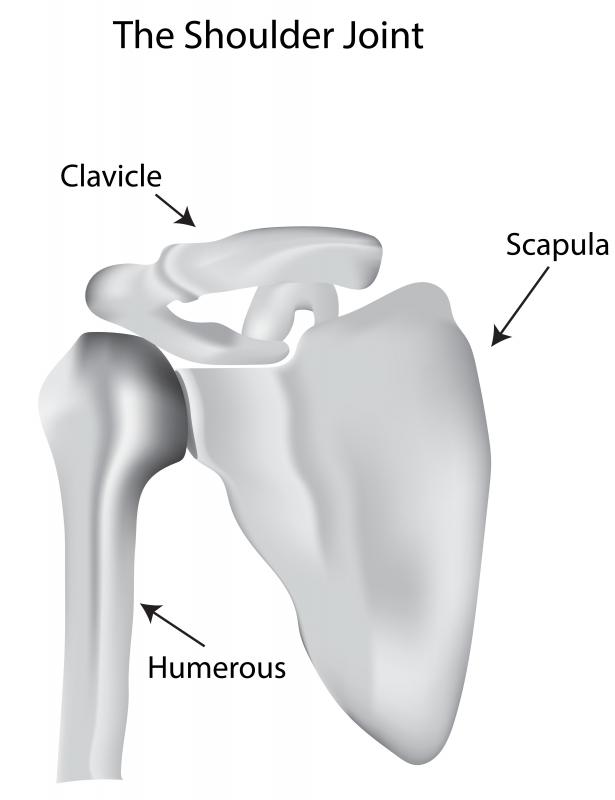At WiseGEEK, we're committed to delivering accurate, trustworthy information. Our expert-authored content is rigorously fact-checked and sourced from credible authorities. Discover how we uphold the highest standards in providing you with reliable knowledge.
What Is Glenohumeral Instability?
Glenohumeral instability is a condition in which the shoulder joint slips partly or completely out of place, often causing pain which increases with movement. The shoulder joint, or glenohumeral joint, is formed between the humerus, or arm bone, and the shoulder blade, or scapula. It consists of the round end, or head, of the humerus sitting inside a hollow part of the scapula known as the glenoid fossa. As the shoulder needs to perform a wide range of movements, it is not as stable as many other joints and is easily dislocated. Glenohumeral instability may be a condition at birth or it can be the result of an accident or other, unknown causes.
Sometimes people are born with glenohumeral instability, possibly due to joint deformity or as a side-effect of another illness, such as Ehlers Danlos syndrome. In Ehlers Danlos syndrome, body tissues are too weak and flexible, including the ligaments and muscles that hold joints together. This means that glenohumeral ligament sprains are more likely to occur, leading to a loose joint. In some people, the shoulder joint seems to lose its stability, for reasons which are unknown. Accidental injuries are a known cause of glenohumeral instability and may involve damage to bones, muscles, ligaments or the capsule that surrounds the shoulder joint.

Typically, the most common symptom of glenohumeral instability is having a sore shoulder joint that becomes even more painful when the arm is held in certain positions, or when certain movements are performed. When the instability is the result of an accident, the person might report falling on to an outstretched hand or being involved in a motor vehicle accident. Where no accidental injury has occurred, the person may experience pain that comes and goes, which is aggravated by use and relieved by rest. Some patients notice the humeral head slipping out of place or looseness associated with the joint. Non-accidental glenohumeral instability tends to affect both shoulders and the joint is lax in all directions.

The treatment of glenohumeral instability varies according to the type of instability and the patient's age and motivation. In cases of accidental injury, shoulder sprains may be immobilized at first. Then a course of strengthening exercises is carried out by the patient to stabilize the joint. For some patients, surgery is the preferred treatment and keyhole or conventional surgical methods may be used. A possible complication following surgery is a reduced range of glenohumeral joint movement, which could represent a significant shoulder disability for some athletes.
AS FEATURED ON:
AS FEATURED ON:














Discuss this Article
Post your comments